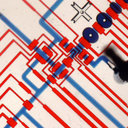Poly(ADP-ribose) polymerase inhibition suppresses inflammation and promotes recovery from adrenal injury in a rat model of acute necrotizing pancreatitis.
Mo kle
Abstrè
BACKGROUND
Poly(ADP-ribose) polymerase (PARP) participates in multi-organ failure in various inflammatory diseases including acute necrotizing pancreatitis (ANP). Since pancreatitis-associated adrenal insufficiency is partly caused by inflammatory damage to the adrenal cortex, we examined whether PARP antagonism could alleviate adrenal insufficiency in a rat model of ANP.
METHODS
ANP was induced by retrograde infusion of sodium taurocholate into the bile-pancreatic duct. At 30 min prior to taurocholate infusion, rats were pretreated with the PARP inhibitor 3-Aminobenzamide (3-AB, 20 mg/kg) or vehicle. Pancreatic pathological injury, adrenal histology, neutrophil infiltration, cell apoptosis, and serum corticosterone level were assessed at various times points. Activities of poly(ADP-ribosyl)ated protein (PAR), nuclear factor-kappaB (NF-kB), tumor necrosis factor-α (TNF-α), intercellular adhesion molecule-1 (ICAM-1) and inducible nitric oxide synthase (iNOS) in the adrenal were also examined.
RESULTS
PARP overactivation in ANP rats is associated with reduced serum corticosterone level and marked cellular alterations in adrenocortical tissue. Inflammatory stress caused by ANP reduced adrenal corticosterone release. 3-AB reduced the activation of PARP and inflammatory markers, decreased myeloperoxidase activity, attenuated adrenal morphologic lesions and cells apoptosis, simultaneously improved the impaired adrenal function.
CONCLUSIONS
Our data demonstrate the involvement of PARP overactivation in the pathogenesis of adrenal dysfunction after ANP. PARP inhibition may suppress inflammation and promote functional recovery from adrenal injury.




